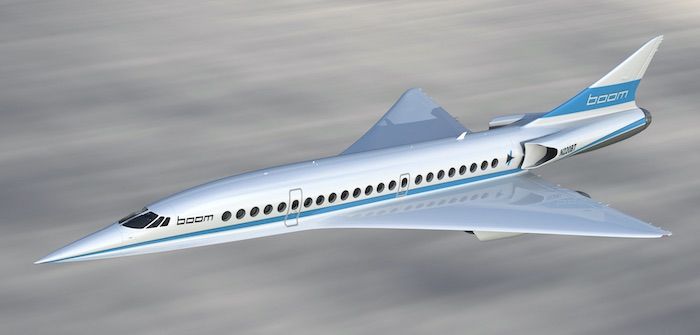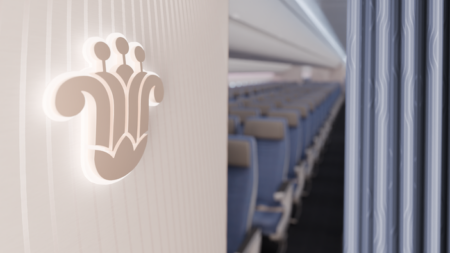Interest is growing in the Boom Supersonic jet, and its introduction into service is looking even more likely with the addition of new strategic partner in the form of Japan Airlines (JAL). JAL has agreed to provide its airline knowledge and experience to support Boom in developing the design of the Mach 2.2 aircraft and defining the passenger experience.
The airline is also showing financial commitment to the project, through an investment of US$10 million and an option to purchase up to 20 Boom aircraft through a pre-order arrangement. If the options are ultimately exercised, JAL would be adding a 45-55 seat all-premium aircraft to its fleet mix that offers the benefit of time in addition to comfort for passengers paying a business class fare. Boom has previously indicated that the aircraft will be launch ready in the ‘mid 2020s’ with a range of 8,334km (5,178 miles) and will cost in the region of US$200 million (plus options and interior).
Below: An example of how Boom envisions the cabin
This deal follows a milestone for Boom in May 2017, when the company raised an additional US$33 million in funding, bringing its capital resources to US$41 million– sufficient to finish building the XB-1 Supersonic Demonstrator (a one-third scale demonstrator) and execute a flight test program.
A further milestone was achieved in March 2016, when Boom announced its first official airline interest when Virgin Group signed an option for 10 supersonic aircraft, which could cover Virgin Atlantic’s popular London to New York route in 3.4 hours. Boom claimed that airlines flying this route with a 40-seat, single-aisle aircraft could turn a profit with a US$5,000 round-trip fare.
“We’ve been working with Japan Airlines behind the scenes for over a year now,” said Blake Scholl, founder and CEO of Boom Supersonic. “JAL’s passionate, visionary team offers decades of practical knowledge and wisdom on everything from the passenger experience to technical operations. We’re thrilled to be working with JAL to develop a reliable, easily-maintained aircraft that will provide revolutionary speed to passengers. Our goal is to develop an airliner that will be a great addition to any international airline’s fleet.”
“We are very proud to be working with Boom on the advancement in the commercial aviation industry. Through this partnership, we hope to contribute to the future of supersonic travel with the intent of providing more `time` to our valued passengers while emphasizing flight safety,” said Yoshiharu Ueki, president of Japan Airlines.
Below: Boom’s vision of the narrow-body premium experience on its XB-1 jet
The passenger experience
So what will the Boom supersonic experience be like? According to the company, each passenger will enjoy a large personal window, direct aisle access, and a dedicated overhead stowage bin. Seat dimensions are expected to be similar to short-haul first class, while for flights over six hours (flights which would take around 15 hours on today’s long-haul passenger aircraft), airlines may offer a first-class lay-flat suite experience.
The 45-55 seat capacity was chosen as this is a similar number to that found in the business class cabin of a typical wide-body aircraft. “If you can fly a wide-body aircraft with good load factors, you can also fly a Boom aircraft with the same schedule with good load factors,” according to the company. The Boom jet can also be configured as an ultra VIP personal or business aircraft.
If you have an interest in what the supersonic passenger experience could look like, we have expert insight in this EXCLUSIVE FEATURE.





